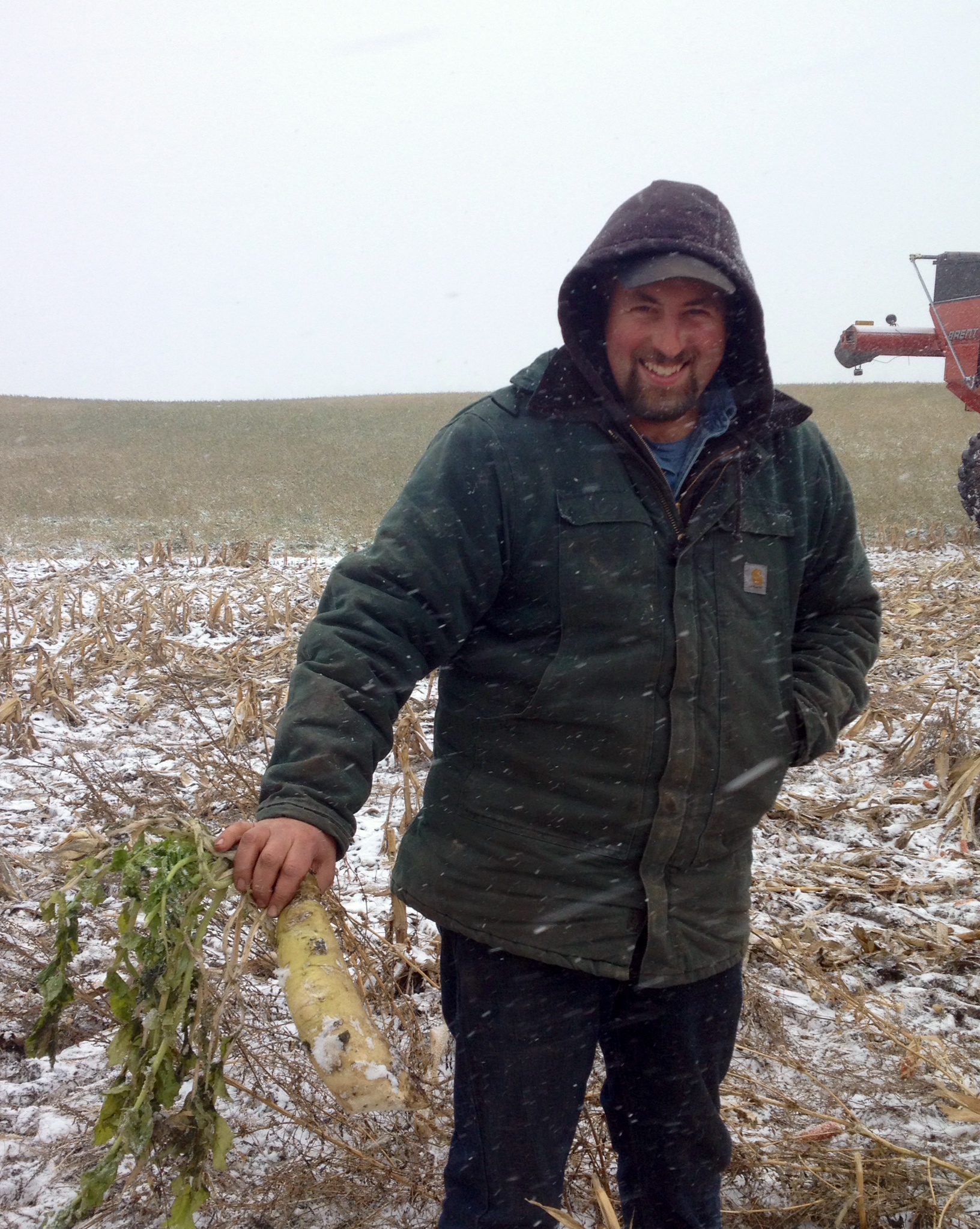Interseeding: perspectives on farm size

Reed Haven Farms was purchased by Dan, Alan and Mason Reed from their parents in 1979. Now Dan and Joanne Reed and their three sons own and operate the farm. The farm comprises 1,400 acres of land with 1,200 tillable acres and has 240 cows.
Previously, the Reeds had not planted cover crops much on their farm except for winter rye in fields susceptible to erosion, which they seeded with a grain drill on tilled ground. For weed management the Reeds apply a pre-emergent herbicide as primary weed control, and use RoundUp Ready corn and soybeans.
On July 1, 2013, cover crops were interseeded in plots planted with silage corn. Cover crops were: ryegrass (‘KB Royal’ at 20 lb/ac), a legume mixture (hairy vetch, red clover, and crimson clover at 45 lb/ac), a grass-legume mixture (ryegrass, hairy vetch, red clover, and crimson clover at 32.5 lb/ac), and tillage radish (10 lb/ac). Cover crop biomass samples were taken November 15, 2013; some areas were well established but others were patchy.

One way that both Dan and Andrew see potential from the InterSeeder is by using forage radish as a cover crop and gaining the benefits from it’s taproot to improve soil quality. Andrew stated, “On our farm it could help on some of the harder clay ground…” Dan expressed that Reed Haven Farms does not practice no-till methods, but would be interested in exploring the benefits of radishes on soil health.
A challenge that Dan and Andrew see with the InterSeeder is the design of the machine. They stated that the InterSeeder is not designed for a large-scale farm, “It’s quite a small piece of equipment. Just doing four rows at a time, and if you are a bigger farm it might not be the answer. If you have a small farm it may be beneficial,” Andrew said. Before the InterSeeder is used on a large-scale farm, the Reeds believe that the machine needs more refinement so it doesn’t damage corn.
However, the Reeds see advantages of using the InterSeeder. The main challenge that Dan faced in the past with seeding cover crops was timing their planting: it was difficult to seed them before it got too muddy or cold in the fall. Establishing the cover crop earlier with the Interseeder could prevent against the uncertainty that a wet fall presents. The InterSeeder may allow for opportunities to integrate cover crops into Reed Haven Farm by avoiding conflicts with corn harvest.





